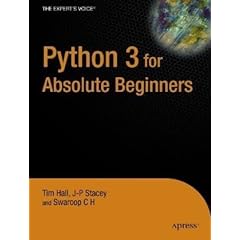Just downloaded 2.6.
Got these two books also :


Need to finish my midterm studying and then start cracking down on this.

Maybe I can put the exercises from the books?
---------- Post added at 06:26 PM ---------- Previous post was at 06:19 PM ----------
Exercise 1.1. Compute 1+1.
The first exercise concerns some basic mathematics: Write a
Python program for printing the result of 1+1. Name of program file:
1plus1.py.
Exercise 1.2. Write a “Hello, World!” program.
Almost all books about programming languages start with a very
simple program that prints the text “Hello,World!”to the screen. Make
such a program in
Python. Name of program file: hello_world.py.
Exercise 1.3. Convert from meters to British length units.
Make a program where you set a length given in meters and then
compute and write out the corresponding length measured in inches,
in feet, in yards, and in miles. Use that one inch is 2.54 cm, one foot is
12 inches, one yard is 3 feet, and one British mile is 1760 yards. As a
verification, a length of 640 meters corresponds to 25196.85 inches,
2099.74 feet, 699.91 yards, or 0.3977 miles. Name of program file:
length_conversion.py.
Exercise 1.4. Compute the mass of various substances.
The density of a substance is defined as ̺ = m/V , where m is the
mass of a volume V . Compute and print out the mass of one liter of
each of the following substances whose densities in g/cm3 are found
in the file src/files/densities.dat: iron, air, gasoline, ice, the human
body, silver, and platinum: 21.4. Name of program file: 1liter.py. ⋄
Exercise 1.5. Compute the growth of money in a bank.
Let p be a bank’s interest rate in percent per year. An initial amount
A has then grown to
A(1+p/100)^n
after n years. Make a program for computing how much money 1000
euros have grown to after three years with 5% interest rate. Name of
program file: interest_rate.py.
These are the first 5 exercises from the Primer book on
Python I have.

